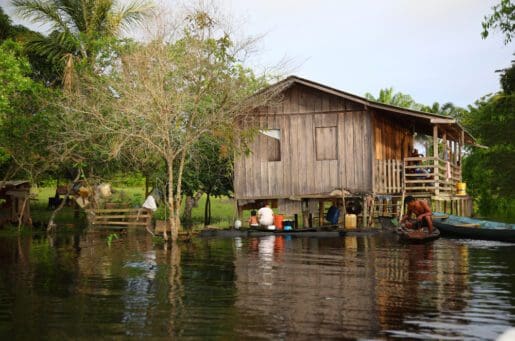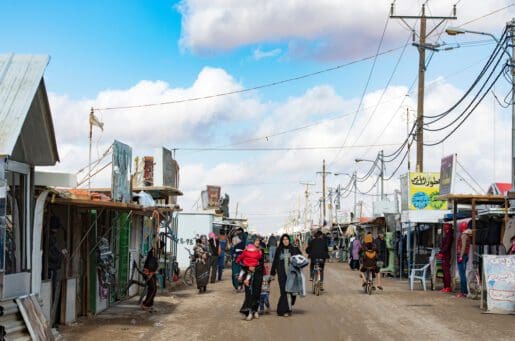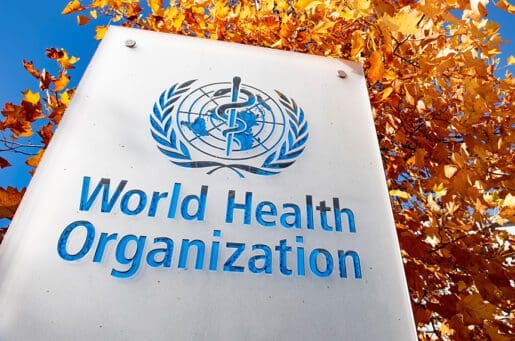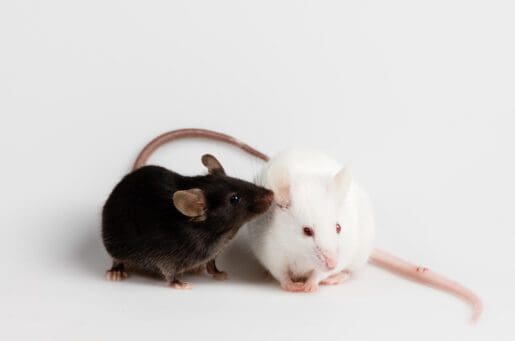Bioethics Forum Essay
What Do We Owe to Child Migrants?
From October 1, 2013, through June 15, 2014, more than 52,000 child migrants crossed the U.S.-Mexico border in South Texas, overwhelming the U.S. Customs and Border Patrol and the Department of Homeland Security (DHS). The Obama administration has declared this an “urgent humanitarian situation” and has authorized DHS to establish a Unified Coordinating Group led by the Federal Emergency Management Agency (FEMA) to provide for the children’s humanitarian needs. While the recent upsurge, and the myths circulating among migrants that there is a window of opportunity for children seeking asylum (or for women with young children), have caught the attention of policy-makers and the media, a May 2014 report by the United Nations High Commissioner for Refugees (UNHCR) concludes that this pattern of “mixed” migration, which includes children fleeing violent home countries, in addition to more typical economic migrants, began in 2009.
What do we owe these children? What is an appropriate ethical and legal framework for exploring and articulating our obligations, both in terms of immediate humanitarian aid and beyond? A recent New York Times editorial captured these questions and identified the problem with the arguments that the United States owes nothing beyond swift deportation:
What is America’s responsibility to those beyond our borders who are dislocated by poverty and violence? (None? If so, then what do we do when they show up at the border anyway? And do we want to treat trafficked children the same as drug smugglers and other criminals?)
There are several recognized frameworks for understanding what this nation (or any nation) owes, in terms of health-related rights or services, to children who show up at the border and how these obligations relate to undocumented children already living in this country. One possibility is to view this situation as a public health crisis in need of an immediate humanitarian response, as the language in President Obama’s memorandum suggests, responding to these children as we would to survivors of a natural disaster. Or we could view the children primarily as refugees seeking safety, triggering a different set of obligations. Whether we regard this situation as more like an earthquake or more like a war, it should be uncontroversial that the safety, health, and lives of these children deserve protection. Their incomplete physical, mental, emotional, and psychological development makes them a vulnerable population to whom we have obligations. It would therefore be unacceptable, not to mention contrary to American law, to wantonly abandon them; we cannot simply drop them back across the border.
Framing this situation as a public health emergency triggers certain humanitarian aid obligations, which is reasonable given the mixedreports of the health and safety conditions in the facilities where many of the children are staying. International guiding principles from the Red Cross and the United Nations Office for the Coordination of Humanitarian Affairs (OCHA) are relevant. Both sets of guidelines include the principles of humanity, which requires the alleviation of pain and human suffering wherever it may be found, and of impartiality, which requires that this alleviation be based solely on need, without discrimination based on nationality, race, or other characteristics of identity. These principles affirm that children apprehended at the border are entitled to aid and the alleviation of suffering.
In addition to these international standards, there are U.S. standards for responding to an emergency, including some that specifically address children. In 2010, the National Commission on Children and Disasters issued a report outlining the obligations of the government towards children, as a vulnerable population, during national emergencies. The report does not mention the immigration status or nationality of the children to whom the government has obligations, but it clearly outlines the role of the government in prioritizing children during emergency management and stresses the need for mental and physical health care, case management, education, and juvenile justice support for all children in times of emergency. When President Obama used humanitarian crisis language to describe the unaccompanied migrants in the Southwest and activated FEMA to help coordinate the response, he suggested that the nationality and immigration status of these children is secondary to their status as vulnerable people in need of aid and protection.
Undeniably, framing the problem of unrelenting waves of child immigrants as an “emergency” or “disaster” raises a sustainability problem: how long can the nation operate under these emergency standards, with FEMA directing the relief effort? Without a change in the status quo, there is no indication that this pattern will end. The situation at the border has been likened to Hurricane Katrina in Louisiana, where FEMA has provided billions of dollars in recovery aid and continues to be involved nine years later. If emergency humanitarian relief is the frame we choose when discussing these child immigrants, longer-term solutions need to be addressed.
The first step towards creating a sustainable solution for these children is to begin to determine their immigration status. While the humanitarian approach requires that we provide for and protect the health and well-being of all unaccompanied minor migrants, the reality is that being a “child victim of disaster” is not an official status with implications for the government’s obligations to the health of these children over the long term. U.S. law recognizes this shortcoming and requires that Border Patrol transfer any unaccompanied minor from a country other than Mexico to the custody of the Office of Refugee Resettlement within three days of apprehension to begin processing the child’s status. Media and nongovernmental agency reports suggest that a significant percentage, even a majority, of these children will, when provided with legal counsel, be found to have some right to stay in the United States. Estimates from the UNHCR and the Vera Institute for Justice suggest that 40 to 60 percent of unaccompanied minors qualify for some sort of “legal relief from removal” in the form of a protected status. Immigrants’ rights advocates in New York City estimate that nearly 90 percent of the child migrants referred to them in recent weeks will qualify for some relief from deportation.
According to the UNHCR report, many of the child migrants have been “forcibly displaced because they suffered or faced harms that indicated a potential or actual need for international protection.” There are various national and international guidelines that define a refugee as someone unwilling or unable to return to his or her home country due to a “fear of being persecuted for reasons of race, religion, nationality, membership of a particular social group or political opinion.” For many children fleeing violence in Guatemala, El Salvador, and Honduras, where gang violence has escalated, this definition could apply. In accordance with U.S. law, which requires that unaccompanied minors from Central America be provided legal counsel to “the greatest extent practicable,” the (largely pro bono) lawyers who represent these children in the U.S. legal system often invoke concrete concerns about health and safety in presenting asylum petitions.
Once a child’s immigration status has been determined, it is possible to gauge what the United States owes him or her in terms of access to health care. Government responsibility towards children with relatives already in the country may end when their sponsors claim them. Their future access to health care will depend on the sponsors’ own immigration status; a child with undocumented parents, for example, tends to have poorer access to health care, regardless of the child’s own immigration status. With children who remain in custody and whose official immigration status is still pending, there is a definite duty to continue to provide for them as vulnerable people incapable of (and legally barred from) providing for themselves.
In choosing a frame to identify and attempt to meet child migrants’ health-related needs, we also need to think about related obligations. For undocumented immigrants already living in the United States, federal and state law provide some access to health care under “emergency” provisions, such as the federal Emergency Medical Treatment and Active Labor Act and emergency Medicaid during hospitalization. However, undocumented immigrants, including minors, are excluded from nearly all other “public benefits,” such as the Children’s Health Insurance Program. So considering what we owe to the child migrant crossing the border today means considering what services we, as a society, currently offer or restrict to children on the basis of immigration status; what the consequences of these policies are; and whether we should aim to do better, under nonemergency conditions, for all undocumented children in the United States.
The United States must acknowledge the limited capacity of invoking a humanitarian crisis for the current surge of child migrants and those who are undocumented within our borders today and understand that any action taken within that framework must necessarily be short-lived. Further, the politicized nature of this issue obscures the ultimate reality that child migrants and children living in shelters or other precarious conditions are vulnerable to sexual assault, violence, and despair, as well as to injury, disease, or poor nourishment. To the principles of humanity and impartiality that undergird an appropriate humanitarian response and the legal protections that prioritize defining child migrants’ status should be added larger obligations to the health and safety of all children within U.S. borders.
Rachel Fabi is a doctoral candidate in bioethics and health policy at Johns Hopkins University and an intern on the Undocumented Patients project at The Hastings Center. Mohini Banerjee is a research assistant at The Hastings Center.
Posted by Susan Gilbert at 06/26/2014 01:21:17 AM |












